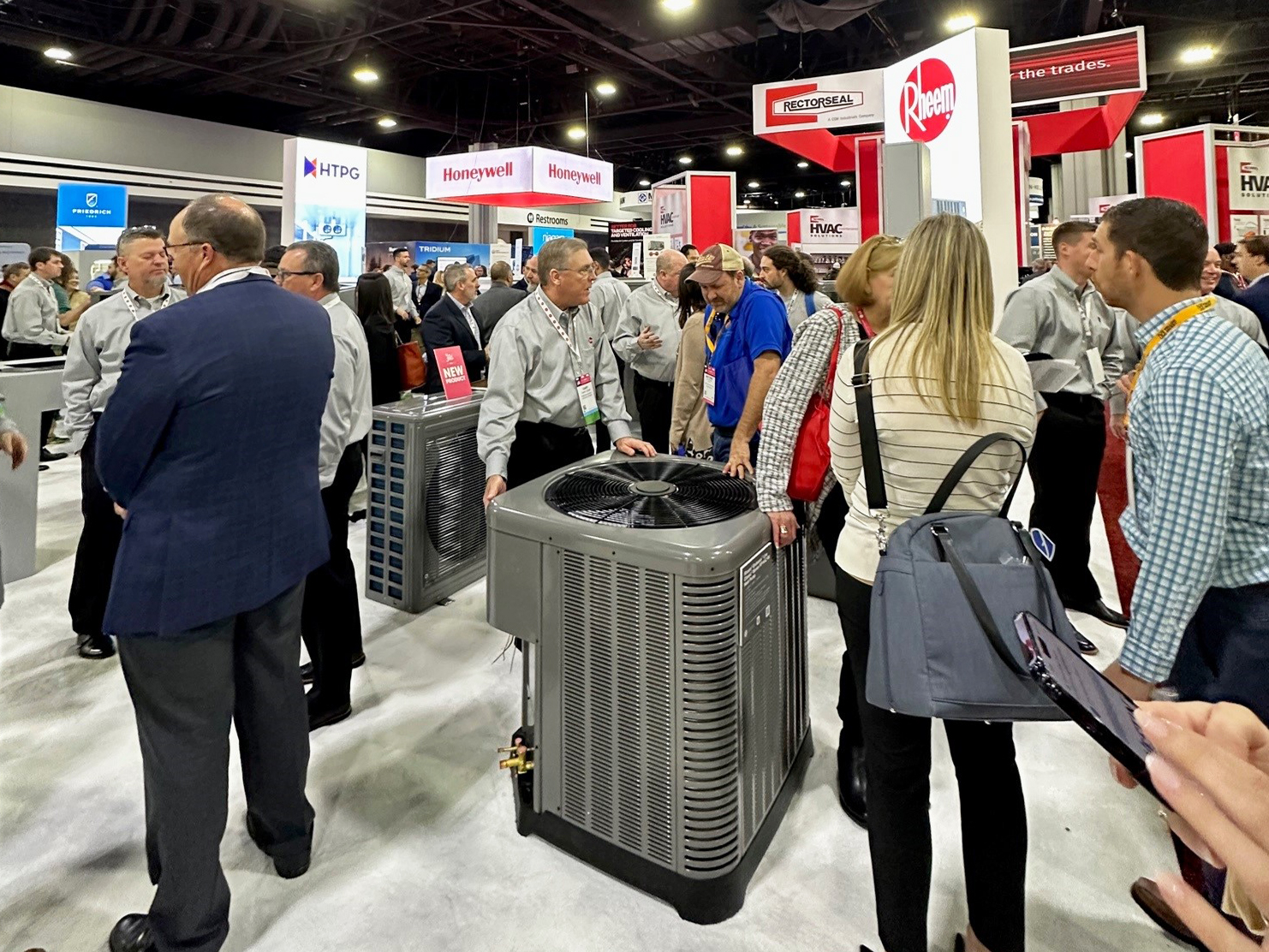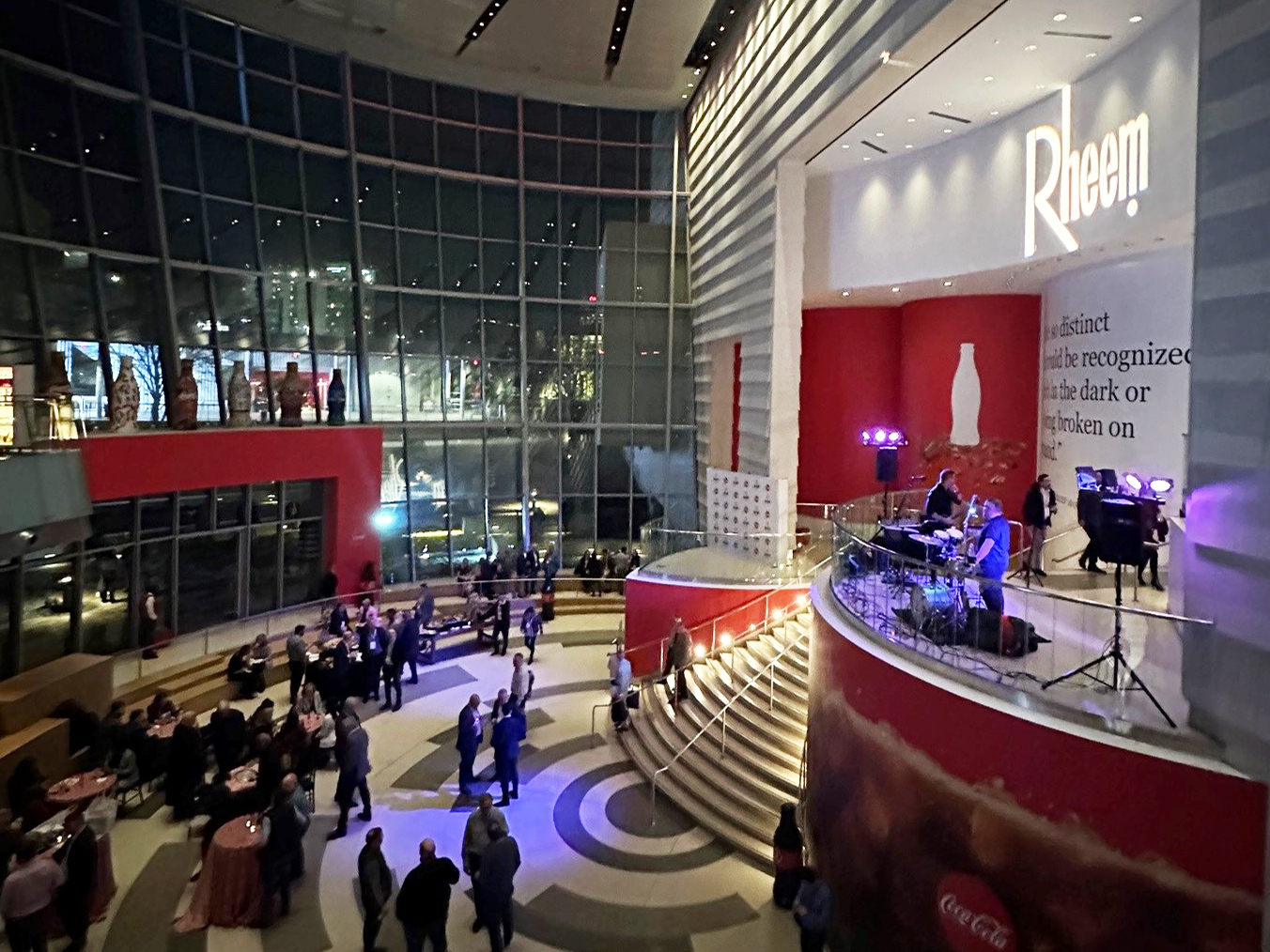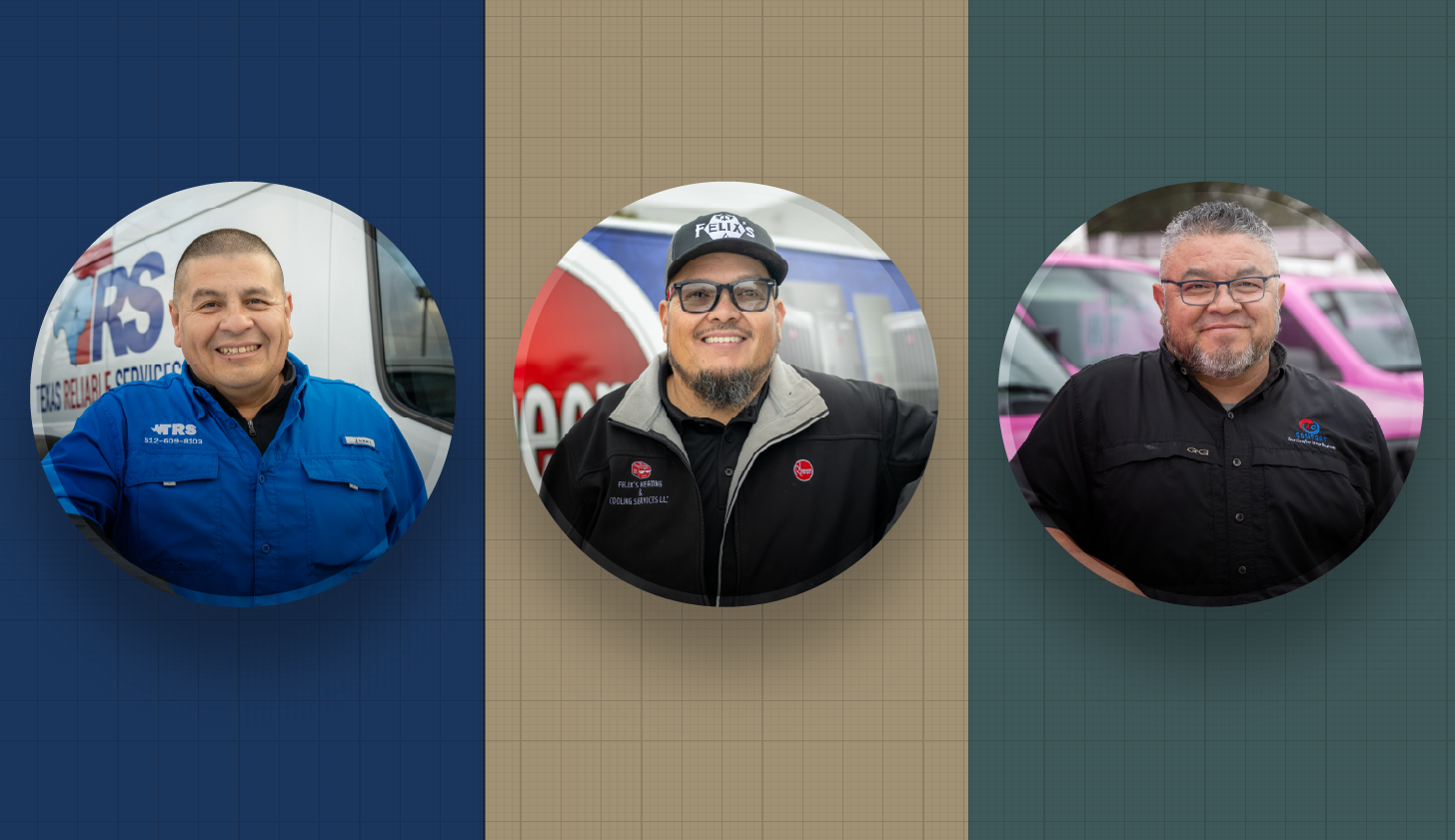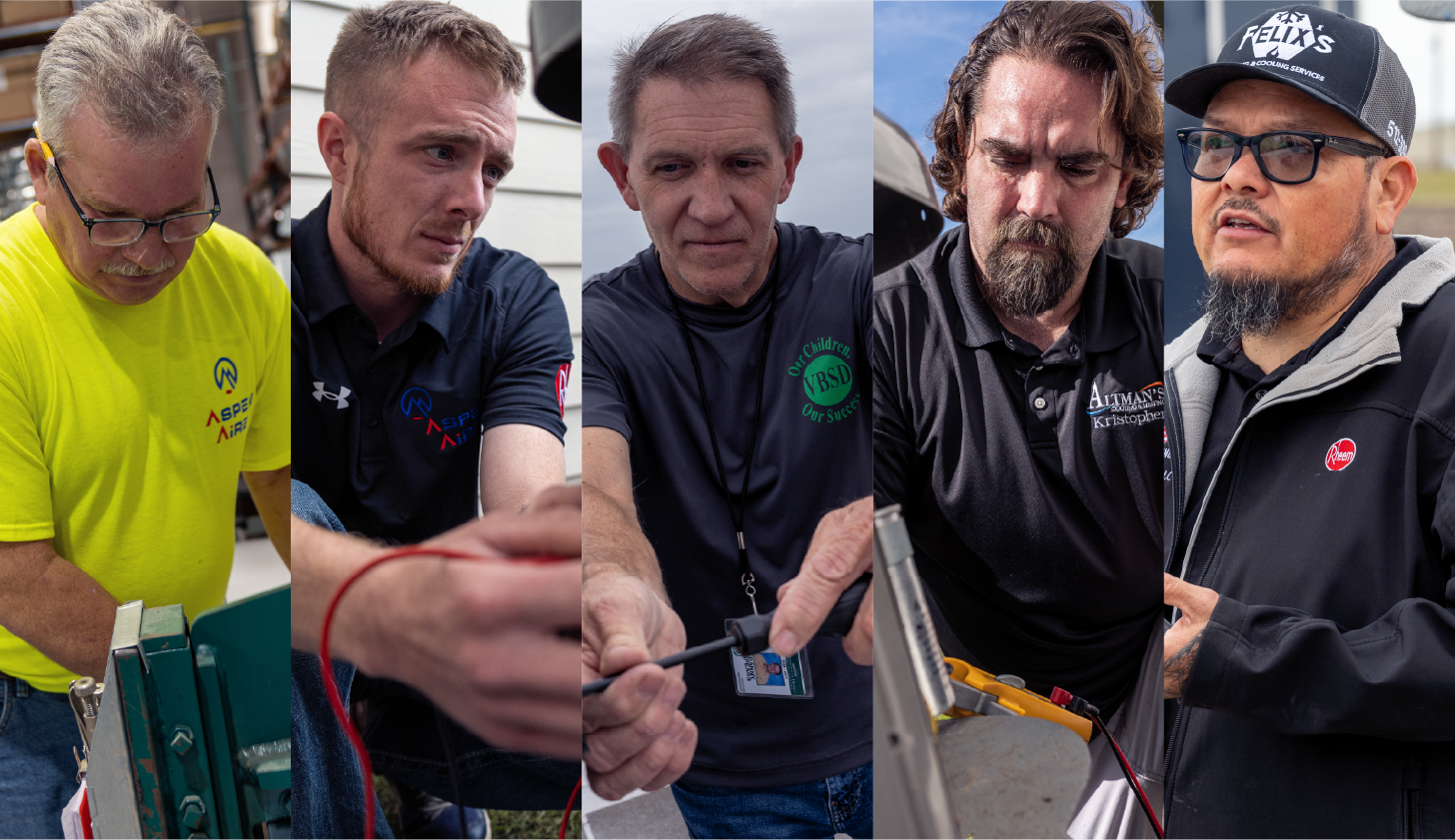4 Key Takeaways from IBS and AHR 2023
February 23, 2023
The Trends and Topics That Will Set the Stage for HVAC This Year


There’s no doubt that 2023 is going to be a big year for HVAC. And with two of the industry’s biggest trade shows already in the books, it’s easy to see why.
The International Builders Show (IBS) and AHR Expo kicked off the year to celebrate the latest innovations and address key industry changes.
“It is extremely powerful to see how many people are employed by our industry,” says Makenzi Roberts, Content and Communications Marketing Manager at Rheem. “When you go to events like these, you quickly realize how many OE manufacturers, component manufacturers, distributors, contractors and people are involved. You’re seeing more than 30,000 of your closest HVAC friends and family.”
With the brightest HVAC minds all in one place, we gathered the standout trends and topics from IBS and AHR 2023 to have on your radar.
1. Emerging technology
Technology is always evolving, but the latest innovations seem to be happening more quickly, says Jarrod Ison, Senior Manager of Customer Experience and Strategic Initiatives.
“Some of the changes are regulation mandated. But we at Rheem are also working to get ahead because of the importance of sustainability and efficiency,” he says. “Overall, we’re seeing a greener consumer, government pushing regulation changes and also just naturally an increase of tech in major OEMs and components sectors. That’s what is really driving the changes in tech.”
Connectivity is also a big part of it. More and more, homeowners want—and expect—the flexibility to control their home temperatures from wherever they are. For contractors, connectivity comes with big benefits, too.
“With our new Endeavor™ line being Bluetooth-enabled, for example, contractors can use the new Rheem Contractor App to make installation and maintenance easier without the need to get on the roof or into tight, uncomfortable spaces to see what’s going on,” Roberts says. “For homeowners, technology like the EcoNet Thermostat allows access to their HVAC system via their mobile devices so that they can connect to, control and monitor their home HVAC system from wherever they are.”

2. Decarbonization and electrification
As more sustainable HVAC solutions come into focus, two major areas took center stage at IBS and AHR: decarbonization and electrification.
Decarbonization refers to reducing or eliminating carbon dioxide (CO2) emissions from the manufacturing process and equipment by cutting dependence on resources that emit high levels of CO2. Products and processes designed with decarbonization in mind mean less greenhouse gases in the atmosphere and a better outcome for the environment.
Electrification works hand in hand with decarbonization and is one of most cost-effective and actionable ways to help reduce CO₂ emissions. Electrification shifts our power needs from resources that produce greenhouse gases to electricity-based sources.
At Rheem, decarbonization and electrification are a key part of our “A Greater Degree of Good” sustainability initiative that we launched 2019, and we’ve made great strides over the past four years as we work toward our 2025 goals.
“Our people-powered sustainability program has made tremendous progress decarbonizing our products, training installers and influencing and minimizing the environmental impact of our manufacturing,” says Mike Branson, President of Global Air.


3. Emphasis on ductless
Among the many product innovations unveiled at this year’s events, a new emphasis on ductless emerged. This is in part due to people spending more time at home following the pandemic.
“We’re seeing a lot more add-ons to home versus construction from the ground up,” says Steve Ament, Strategic Sales. “Ductless is becoming more important because it’s a cost-efficient solution to providing comfort to those new spaces.”
Ductless systems also come with additional benefits. “As comfort is globalized, we’re seeing ductless rise because of its easy usability and installation, and it doesn’t require major construction work,” Roberts says. Ductless systems can also be more energy-efficient, using 30 to 40% less energy than traditional units.


4. Changing industry regulations
The industry saw a huge change in energy efficiency regulations this year, and now it’s preparing for new refrigerant standards in 2025 that will require a switch to A2L refrigerants, which have a low global warming potential (GWP).
“The important thing to remember about the refrigerant transition is that the anticipated limit for GWP for air conditioning is likely to be 750. And that means that R410A will no longer be able to be used in new systems,” says Allison Skidd, Senior Manager of Regulatory Affairs.
A2L refrigerants are mildly flammable, so everyone from the supply chain to installation will need to review and adjust their safety protocols. “These safety standards, in some cases, now require leak detection and other mitigation measures to ensure safe operation,” Skidd says.
The shift also means a changes for equipment and costs. As the production of other refrigerants slows, if you have or are servicing an older unit, prices may rise as availability decreases.
The good news is that Rheem is prepared. The new Endeavor™ line was designed to be regulation-ready not only for 2023 energy efficiency standards but also the 2025 refrigerant regulations.
Rheem will be rolling out more details on the 2025 refrigeration changes as they become available. In the meantime, to stay up to date with the latest industry news and regulation changes, check out these training resources or visit Rheem.com/HVACKnowZone.









